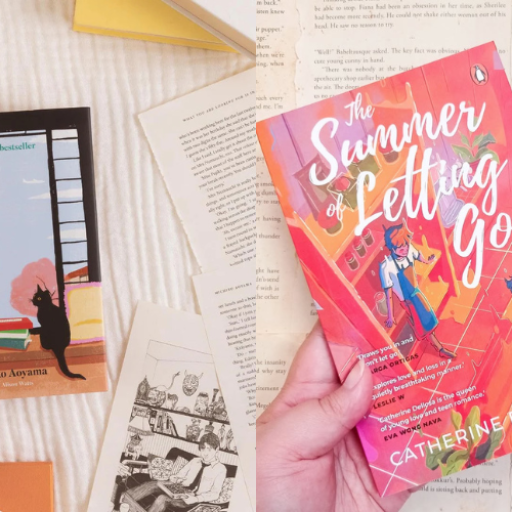For Jayati Bose, the journey from being a fashion journalist to a celebrity stylist and then an entrepreneur has been about understanding the industry and learning to focus on a sustainable approach. We caught up with her as she gears up to launch a new vertical to her sustainable clothing brand, Chotto Golpo.
ELLE: What have been some of the biggest learnings for you over the years?
Jayati Bose (JB):As a journalist, I was commenting on fashion trends and brands. It was an outside-in view of the world. As a stylist, I often interacted with agencies that would want me to replicate designerwear on a budget. There was so much wastage and plagiarism that I couldn’t deal with. When I started my own brand of sustainable fashion, I actually went to the trenches. My interaction with artisans and weavers, seeing their way of making intricate fabrics on their looms, and of course, their socio-economic condition left a deep impact on me. That is why, as an entrepreneur, I have always ensured to keep their working capital cycle as minimal as possible – meeting fair wages as well as making payments in time. That deep-rooted experience of the process of fabric making has been the greatest life experience for me.
Overall, it has been a fabulous journey – I could say that the three roles have helped me live the entire lifecycle of fashion in India, from raw material production to luxury end product.
ELLE: Tell us about your clothing brand. How did it start, and what are your plans for 2021?
JB:When my daughter was born, I started looking for kidswear in the market, and I could only find polyester and other synthetic fabrics. So, I decided to design clothes for her with handwoven cotton fabrics. A lot of parents started enquiring about the source of the garments she is wearing. This was when I decided to venture into Chotto Golpo – to make sustainable and fashionable kidswear.
We are expanding the brand and now getting into womenswear. The garments are transient in design and nature so that they can be used and passed down to others. Instead of linearity of usage and disposal, I want to create a circular economy of usage. I want to bridge the incongruence between the rural and urban world of fashion and make the journey from artisan to the entire ecosystem of design a seamless one.
ELLE: The pandemic has been tough on everyone, and each person has found her way to cope. What has been yours?
JB:It has been a mixed bag. Of course, I am getting to spend time with my daughter and husband (otherwise, he has been travelling all the time). But being confined in a space takes a toll on mental health. I am doing yoga, going for walks and trying to stay positive. Also, I tell myself not to complain much and count my blessings.
I am a strong believer in ‘karmanyev adhikaraste mafalesu kadachana’; we can only put in our best efforts without being too hopeful about outcomes. Outcomes are dependent on a multitude of factors and dynamics. That internalisation helps me to stay calm and positive. I keep doing my work so that I do not have any regrets about not trying.
ELLE: Tell us about the recent shoot you did, the White Summer Saree. What inspired it?
JB: All my life, I have been behind the camera and enjoyed being there. My photographer friend Gourab Ganguly actually egged me to come in front and do a shoot with him. That made me do the transition from behind the camera to come in front of it. I decided to become my own muse and capture saree stories from designers who use India’s sartorial traditions and are ethical to the core in their practice.

The first saree I wore is from Péro by Aneeth Arora. It is a sum of all the textiles which were developed in different parts of India with region-specific techniques. It was a journey of a polka dot, through Rajasthan, Gujarat, West Bengal and the south of India. The European laces became the main element in bringing together all these skills and the hand-crocheted blouse make by Afghani refugee women added a touch of delicacy and finesse to the ensemble.

This is Anavila’s hand-woven linen sari with silver selvedges, printed with bird motif in the body and florals on the pallu. The sari is woven in West Bengal and printed with motifs developed and painted by hands.

This saree by Naushad Ali is a handwoven cotton mul that has an innate translucency to it, along with a traditional border and pallu. It is kept minimal and void of any other ornamentation. The blouse is my interpretation of a contemporary blouse, almost like a woven t-shirt for comfort. The fabric is indigenous cotton with naturally dyed stripes.

This cotton saree with multi-block print is from Eka by Rina Singh. It is handwoven in West Bengal, printed at the Eka studio, with a thread count of 100. It is accented with multicolour hand block printed floral motifs and the borders are finished with a floral bail hand block print.

This draped jumpsuit, reflecting the felinity and strength of a traditional saree, is from 11:11 by Himanshu Shani. It is made in hand-spun unbleached/ecru colour organic cotton, and the yarn is spun by hand and woven on a handloom in India. Kala cotton is indigenous to Kachchh and, by default, organic, as the farmers do not use any pesticides and synthetic fertilizers. It is a purely rain-fed crop that has a high tolerance for both disease and pests.
ELLE:What do you love the most about your work?
JB:Working on sustainable fashion has given me tremendous learning and a sense of satisfaction. I have never been formally educated in fashion – my work has been my school, and I am learning new things every day. That is what I love about my work – the tremendous learning that I am having on a day-to-day basis.
Photos: Gourab Ganguli























